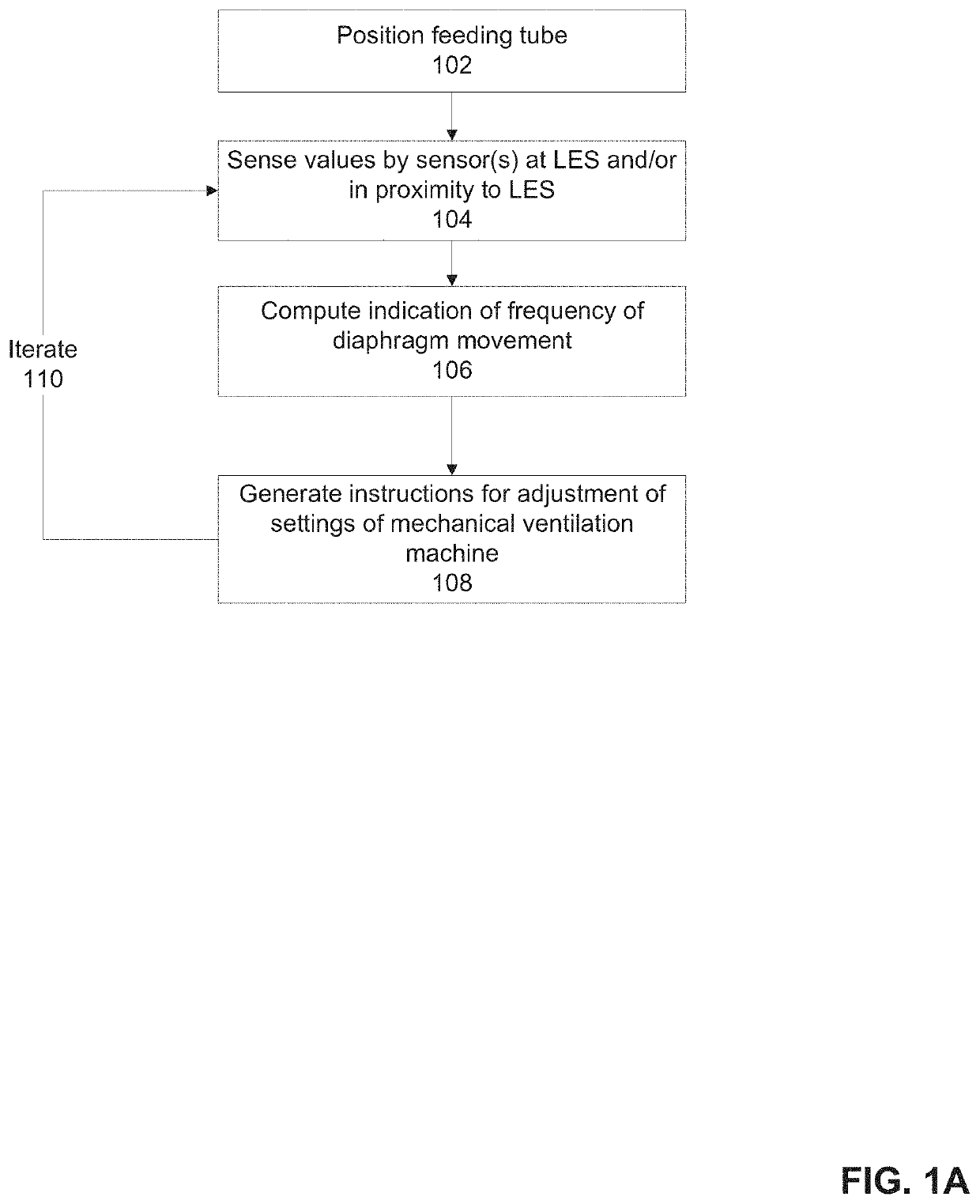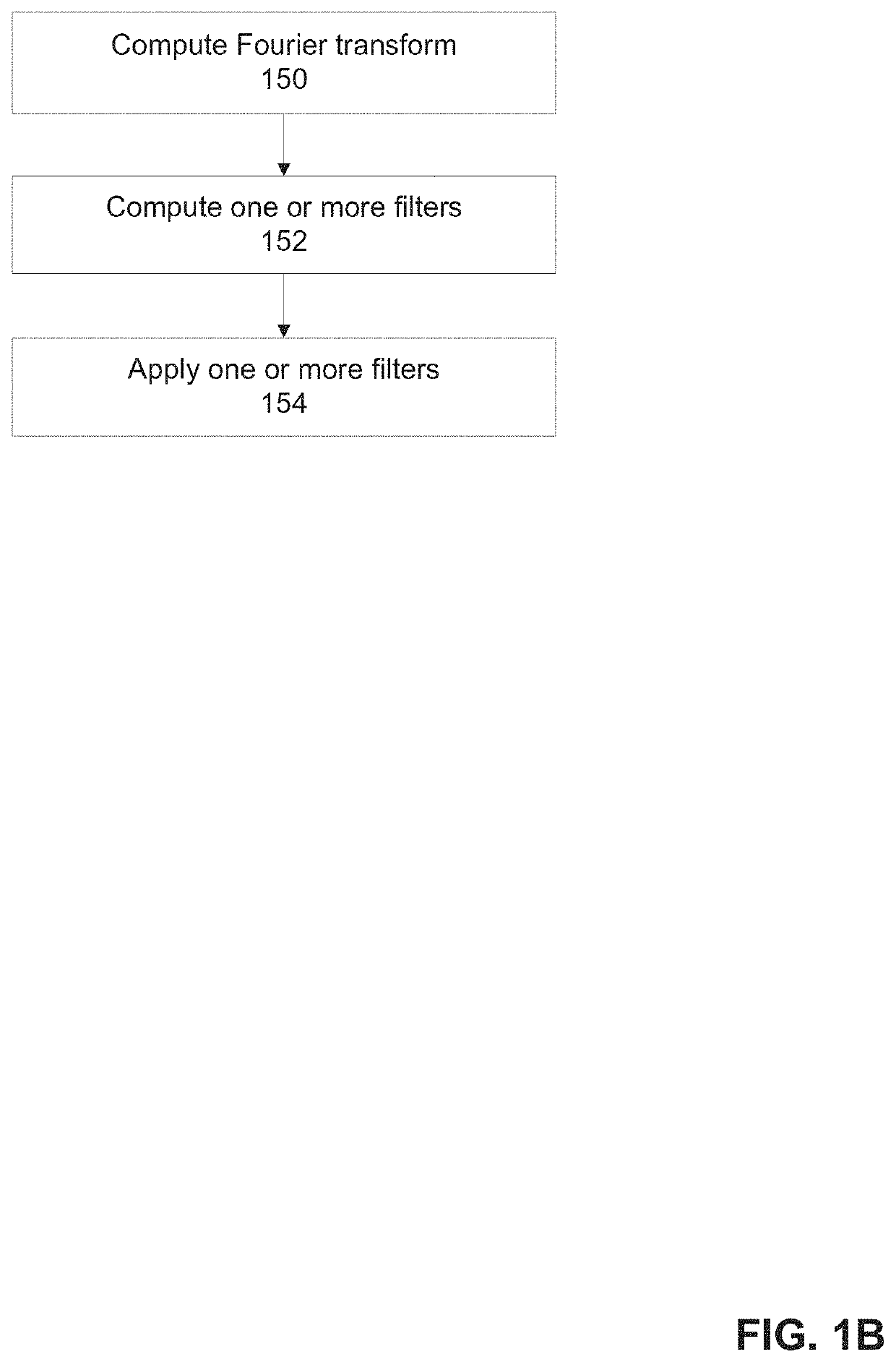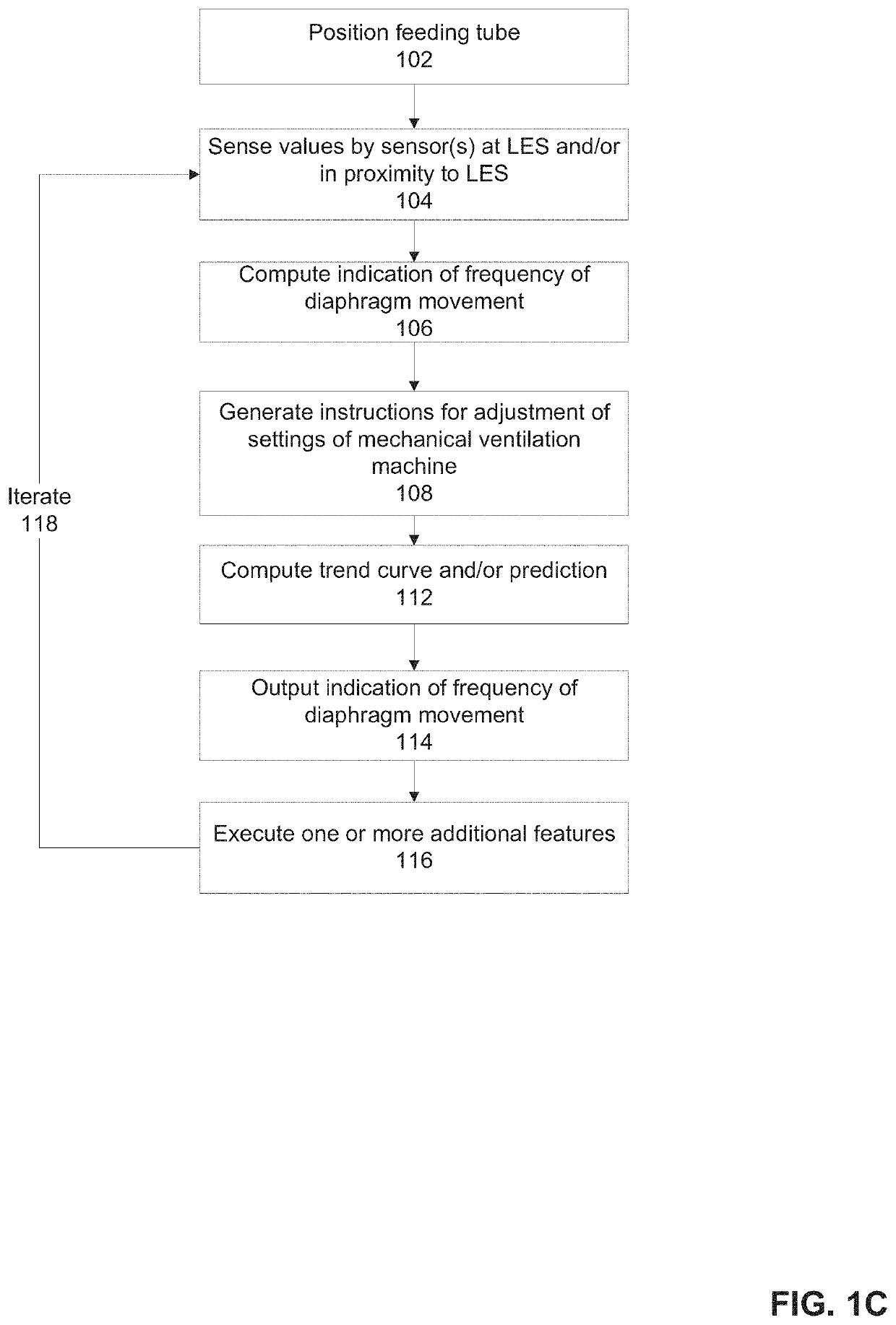Systems and methods for tracking spontaneous breathing in a mechanically ventilated patient
a mechanical ventilation and patient technology, applied in the field of mechanical ventilation treatment, can solve the problems of prolonged mechanical ventilation, significant morbidity and mortality, and achieve the effect of improving the performance of existing feeding tubes
- Summary
- Abstract
- Description
- Claims
- Application Information
AI Technical Summary
Benefits of technology
Problems solved by technology
Method used
Image
Examples
Embodiment Construction
[0046]The present invention, in some embodiments thereof, relates to treatment of mechanically ventilated patients and, more specifically, but not exclusively, to systems and methods for tracking spontaneous breathing of a mechanically ventilated patient.
[0047]As used herein, the term frequency may refer to frequency band.
[0048]An aspect of some embodiments of the present invention relate to a system, an apparatus, and / or method for monitoring spontaneous breathing of a mechanically ventilated target individual and adjusting parameter(s) of a mechanical ventilator based on the monitored spontaneous breathing signal as sensed by a sensor(s) located within the esophagus. An indication of a frequency band of diaphragm movement waveform of the mechanically ventilated target individual is computed according to an analysis of output of at least one sensor that senses values at the lower esophageal sphincter (LES) and / or of tissues of the esophagus in proximity to the LES. The frequency ba...
PUM
 Login to View More
Login to View More Abstract
Description
Claims
Application Information
 Login to View More
Login to View More - R&D
- Intellectual Property
- Life Sciences
- Materials
- Tech Scout
- Unparalleled Data Quality
- Higher Quality Content
- 60% Fewer Hallucinations
Browse by: Latest US Patents, China's latest patents, Technical Efficacy Thesaurus, Application Domain, Technology Topic, Popular Technical Reports.
© 2025 PatSnap. All rights reserved.Legal|Privacy policy|Modern Slavery Act Transparency Statement|Sitemap|About US| Contact US: help@patsnap.com



